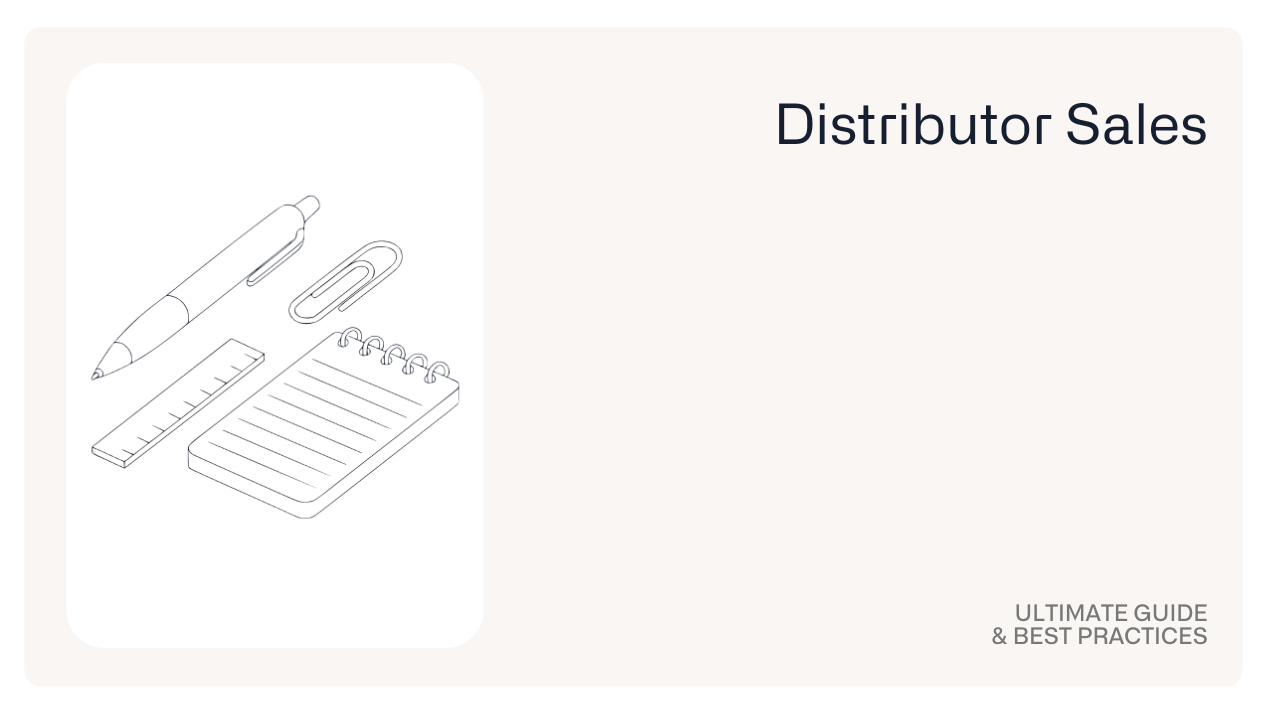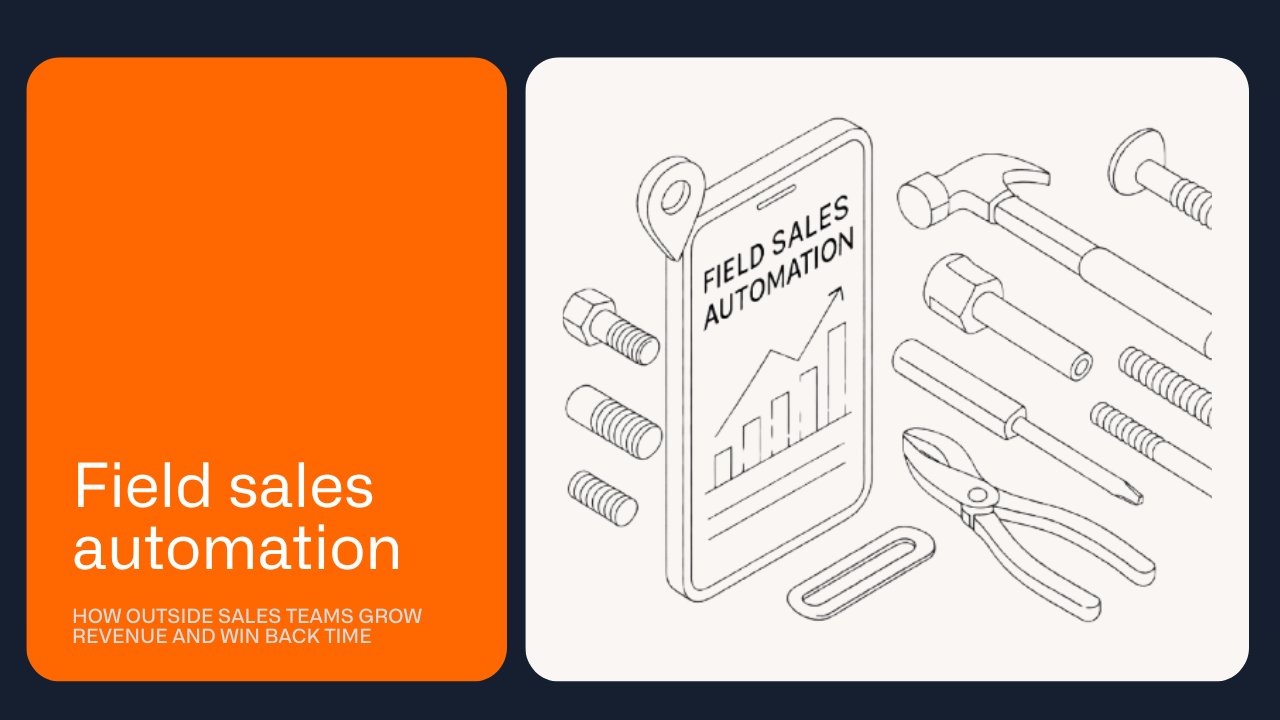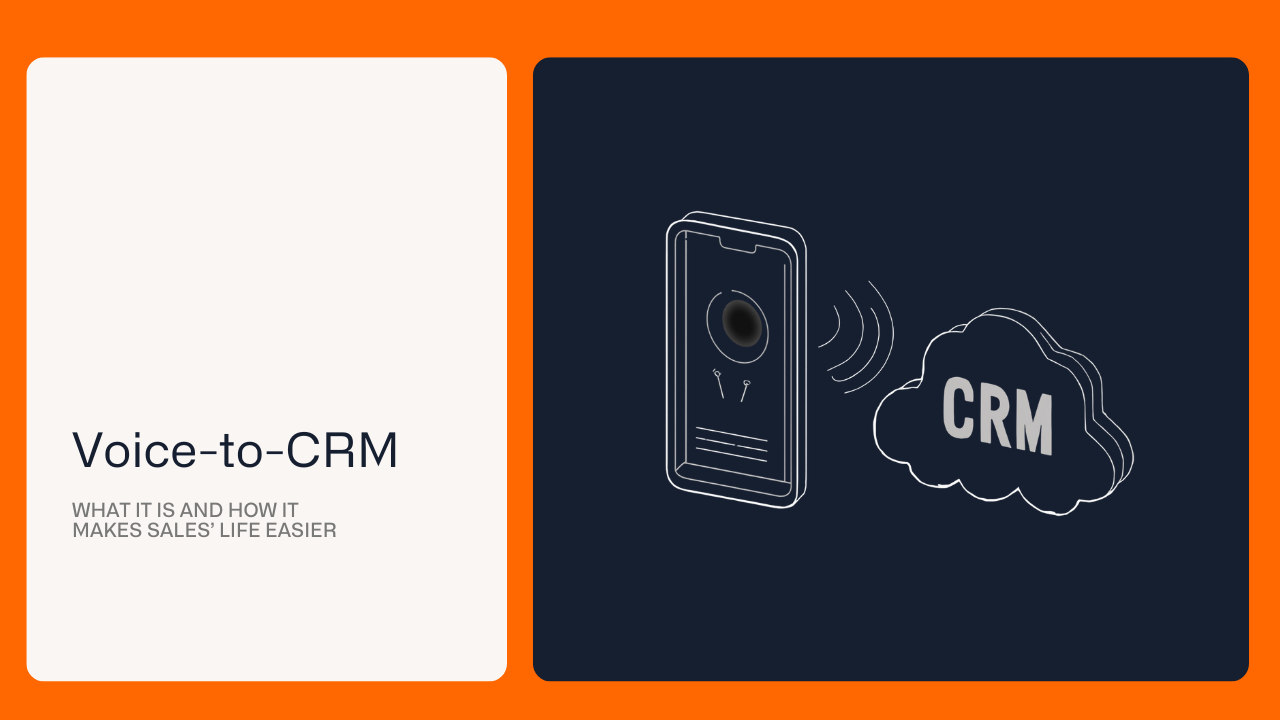Route planning in field sales: How sales teams save time and better serve customers
Summary
Efficient route planning in the field means much more than the fastest route. Successful teams take a two-stage approach:
- Prioritize customers — Which customers are A, B or C customers? Who brings in revenue, who is threatening to jump out?
- Optimize routes — only then does it make sense to calculate routes, stops and dates.
With Excel or Google Maps, this can be done on a small scale; larger teams need specialized software. Planning in a structured way not only saves kilometers, but also increases sales and customer satisfaction.
Why Is Route Planning in Field Sales So Critical?
Field sales reps face the same challenge every day: too many customers, too little time. Without a clear structure, hours are wasted on the road – and the most valuable conversations are missed.
Efficient route planning solves exactly this problem. It creates order, reduces stress, and ensures that visits happen where they really drive revenue.
The benefits at a glance:
- Travel times and costs drop – fewer detours, less fuel.
- More customer visits per day – because less time is lost in the car.
- Fewer duplicate visits or gaps – clear oversight prevents wasted trips.
- Better sales management – managers see where time and revenue are created.
Route planning is not a “nice to have” – it’s a lever for productivity and stronger customer relationships.
How Has Route Planning Changed?
In the past, route planning followed rigid models: circle methods, highway-based planning, or simply a paper map. That helped avoid detours but overlooked the key problem: not all customers are equally important.
Even today, many reps still plan by gut feel:
- “Where have I not been for the longest time?”
- “Where the coffee tastes best.”
Charming – but inefficient.
Modern sales organizations work on two levels:
ABC segmentation
- A-customers: key accounts with high revenue share → regular, close attention.
- B-customers: solid potential → scheduled visits at longer intervals.
- C-customers: lower relevance → digital touchpoints or rare visits.
Classic segmentation as a foundation for route planning.
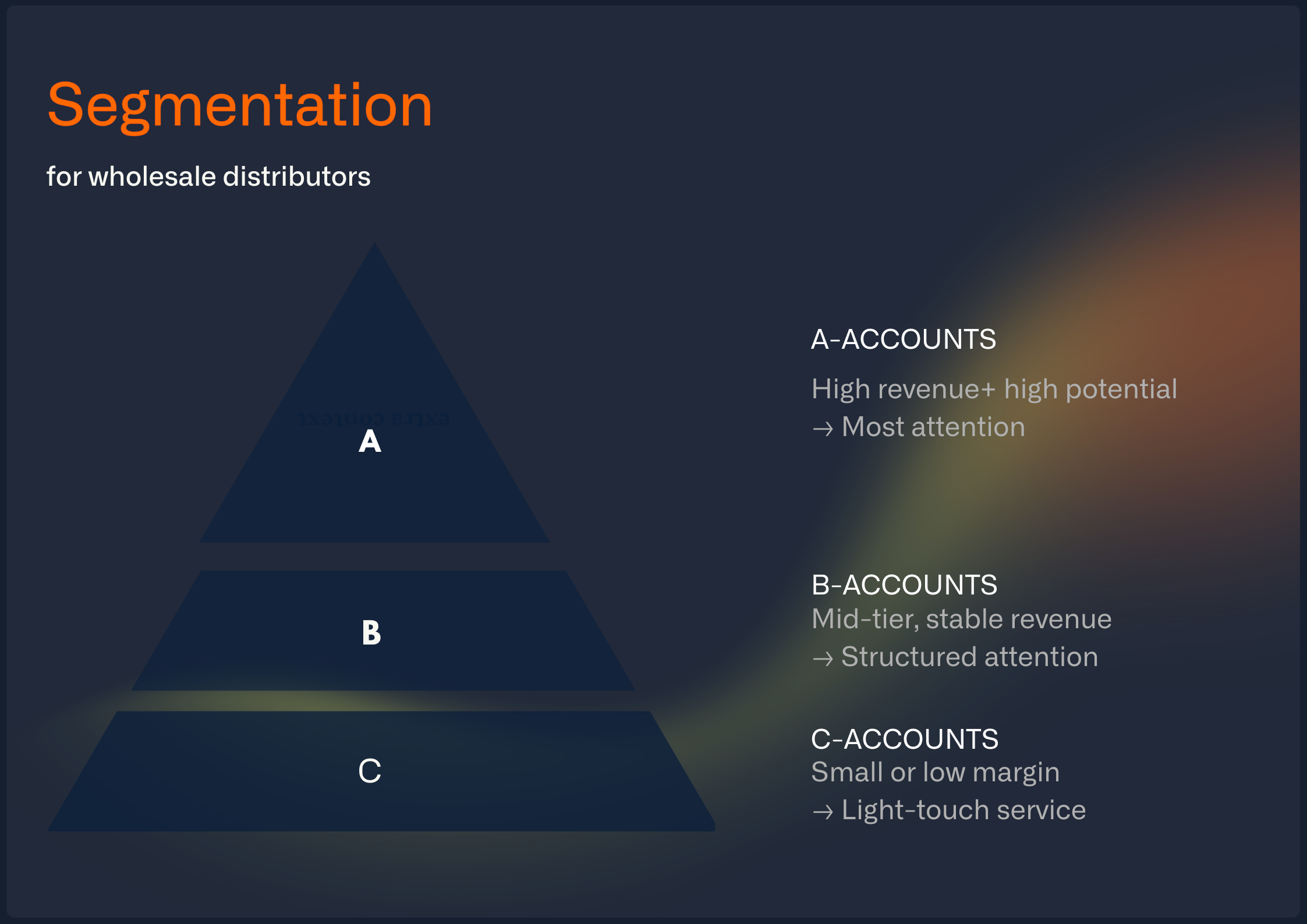
Data-driven prioritization
Segmentation alone isn’t enough. A C-customer can suddenly show huge potential – or an A-customer may be at risk of churn.
Modern systems detect such patterns automatically and suggest visits where the biggest impact is likely.
Why Route Optimization Alone Isn’t Enough
Classic ABC segmentation helps categorize customers: A-customers get close care, B-customers at intervals, C-customers less often. That brings structure.
But even the best segmentation doesn’t solve the core problem: if the wrong customers are on the route, even the “perfect” route is worthless.
In practice it often looks like this:
- Reps plan based on gut feel – “where they haven’t been in a while” or “where the coffee is good.”
- Customers are prioritized by proximity, not revenue potential.
- A-, B-, and C-customers get mixed up on the list.
The result: routes are efficient, but revenue stagnates.
The real question is: which customers should be on the route in the first place? Driving through a territory just because it hasn’t been visited in a while isn’t enough.
Instead of rigid segmentation, sales teams need dynamic prioritization. With Revenue Intelligence from ERP and CRM data, modern tools can automatically identify:
- Which customers show strong upsell potential.
- Where buying patterns signal churn risk.
- Which accounts deserve immediate attention – even if they were previously classified as “C-customers.”
Anyone optimizing kilometers alone is optimizing the wrong end. Revenue growth starts with smart customer selection – only then does route planning make sense.
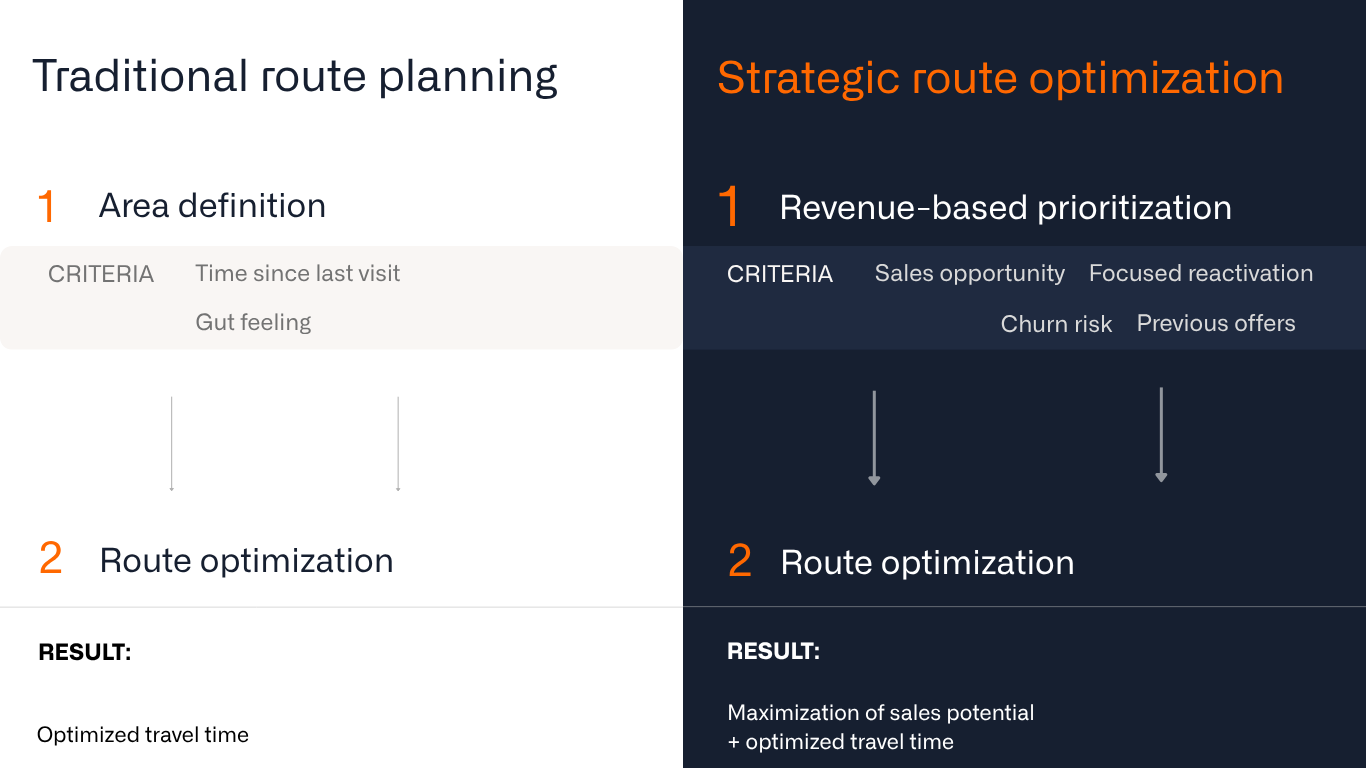
Which Tools Help with Route Planning in Field Sales?
The software landscape is broad – from free online tools to specialized enterprise solutions. Here are the most common options:
portatour® – built for field sales, with CRM integration
One of the best-known solutions for sales route planning.
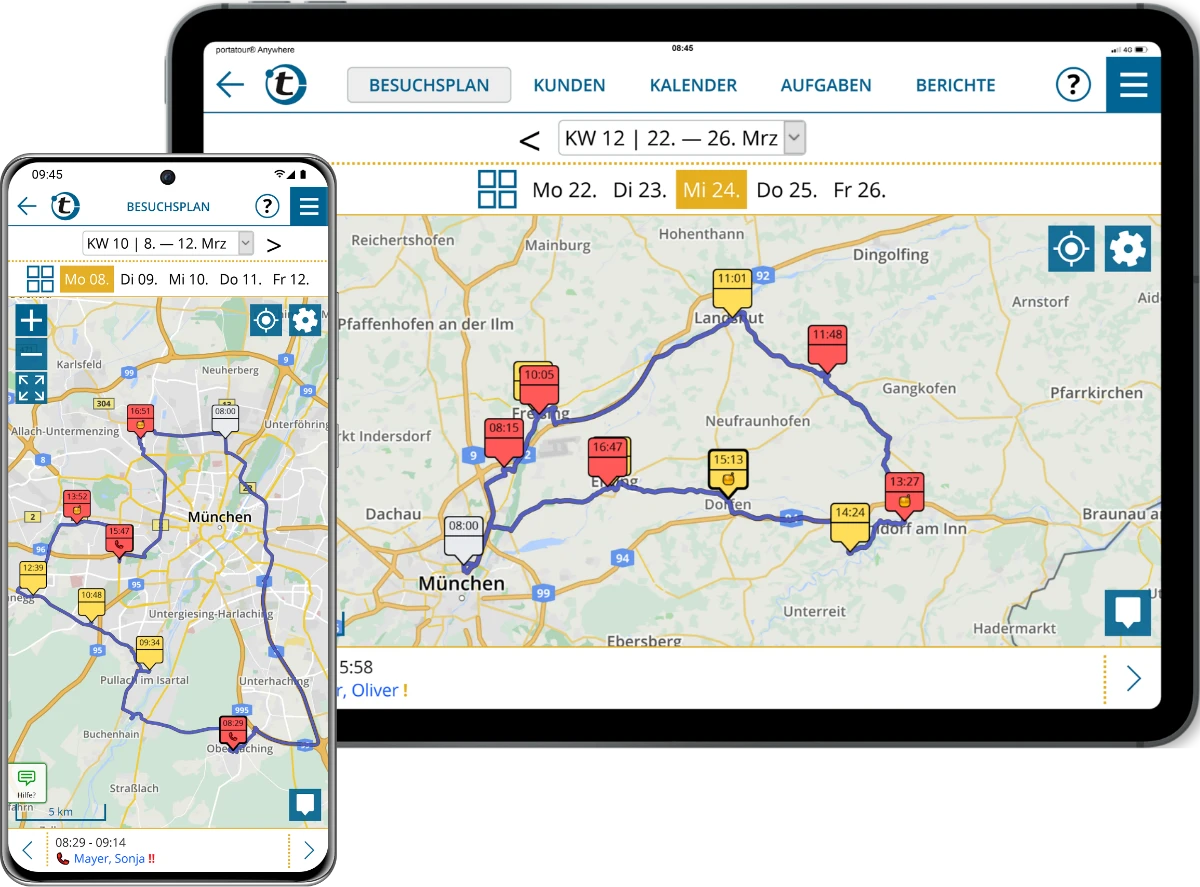
Strengths:
- Automatic daily and weekly planning based on customer data.
- Direct integration with CRM systems like Salesforce or Microsoft Dynamics.
- Considers visit frequencies, time windows, and customer priorities.
Best for: larger field sales teams with strong CRM usage.
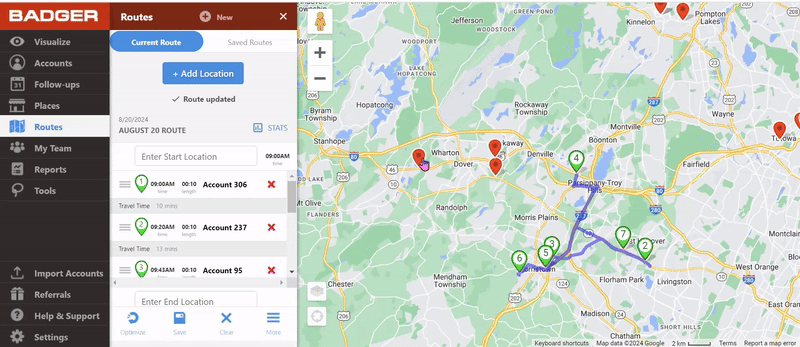
Strengths:
- Visualizes customer locations directly on a map.
- Optimizes daily routes, saving up to 25% driving time according to customers.
- Mobile app for iOS and Android, very user-friendly.
Best for: sales and service teams covering large territories.
Google Maps – the free entry-level option
Not a dedicated tour planning tool, but used by many reps.
Strengths:
- Free and universally available.
- Great for small teams or individual reps.
- Simple multi-stop routing.
Limitations:
- Maximum of 10 stops per route.
- No prioritization or CRM integration.
Best for: freelancers or small teams without complex requirements.
Other interesting tools
- RouteXL – online route planner, free up to 20 addresses. Useful for deliveries or service routes.
- MapTrip – strong in logistics, with APIs for field service.
- Industry-specific apps – e.g. for technicians or craftsmen with integrated scheduling.
Acto – before route planning comes customer prioritization
Acto is not a routing tool. Instead, it works one step earlier: identifying the most important customers.
Our Revenue Intelligence uncovers opportunities hidden in ERP and CRM data – and highlights the customers (and products) with the greatest revenue potential. Directly in Outlook, CRM, or on mobile.
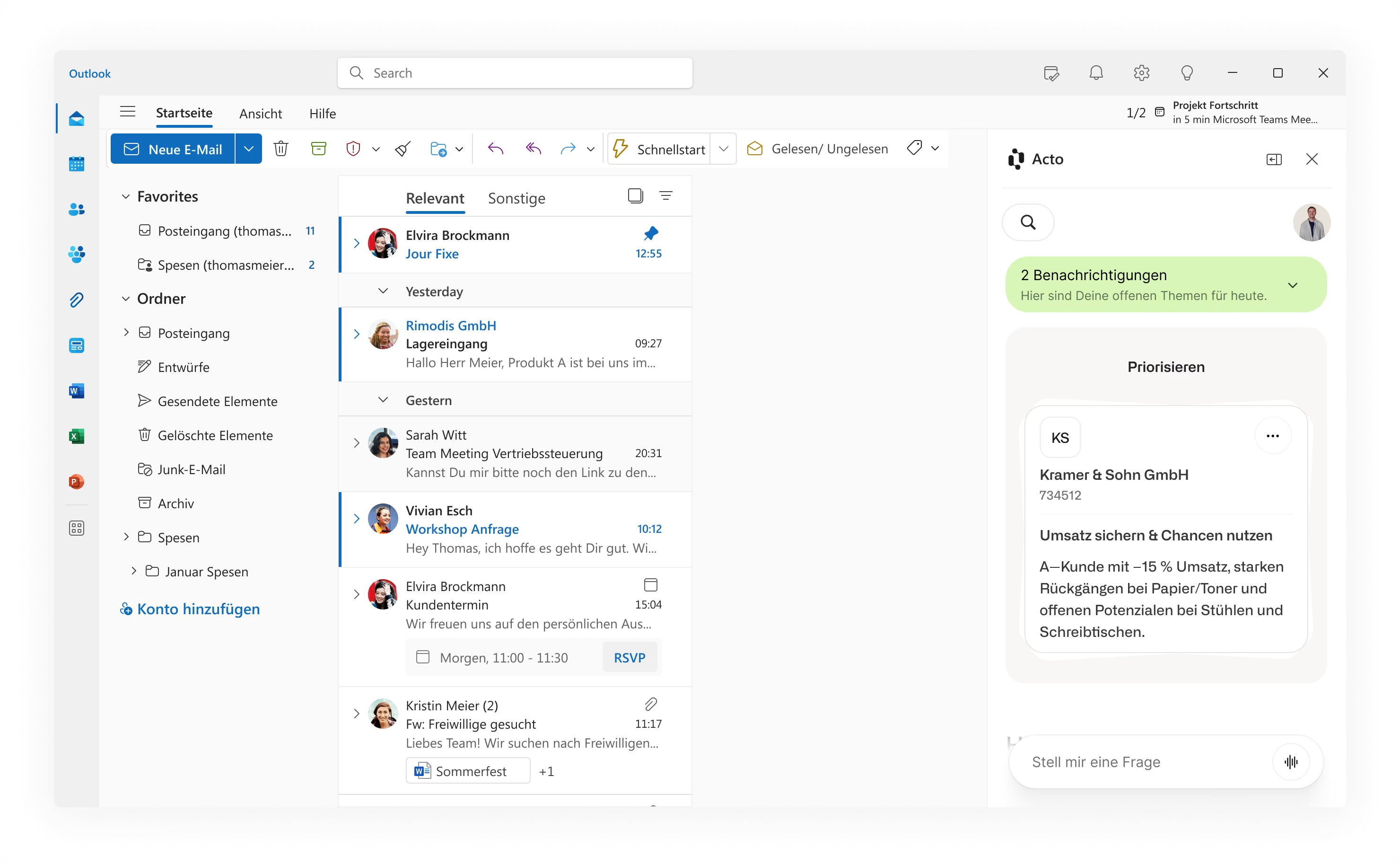
Result: measurable sales uplift for wholesale and manufacturing teams.
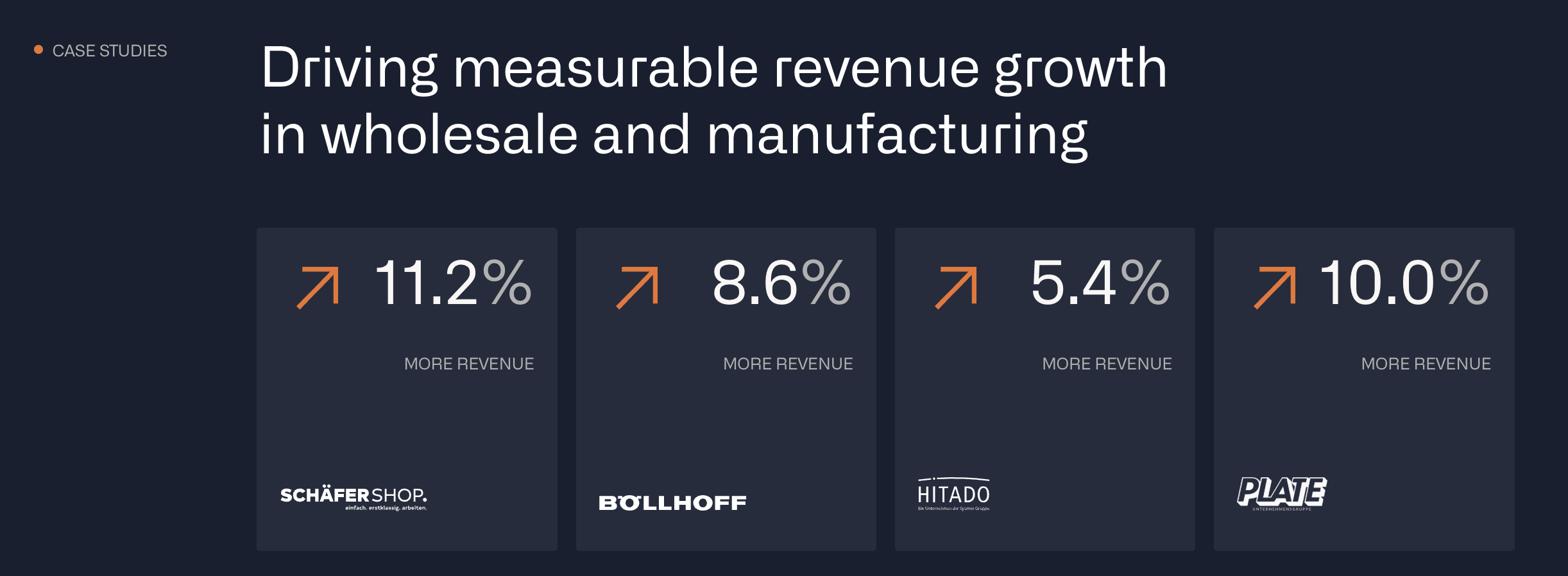
Route Planning in Excel – Does It Work?
Many sales teams start with Excel spreadsheets: listing customer addresses, adding visit dates, and copying data into Google Maps. For small setups, that works – but:
- Beyond 20 customers per week, it gets chaotic.
- Changes (cancellations, new customers) are hard to update dynamically.
- Travel times and mileage must be calculated manually.
Excel is fine for a start – but quickly becomes inefficient.
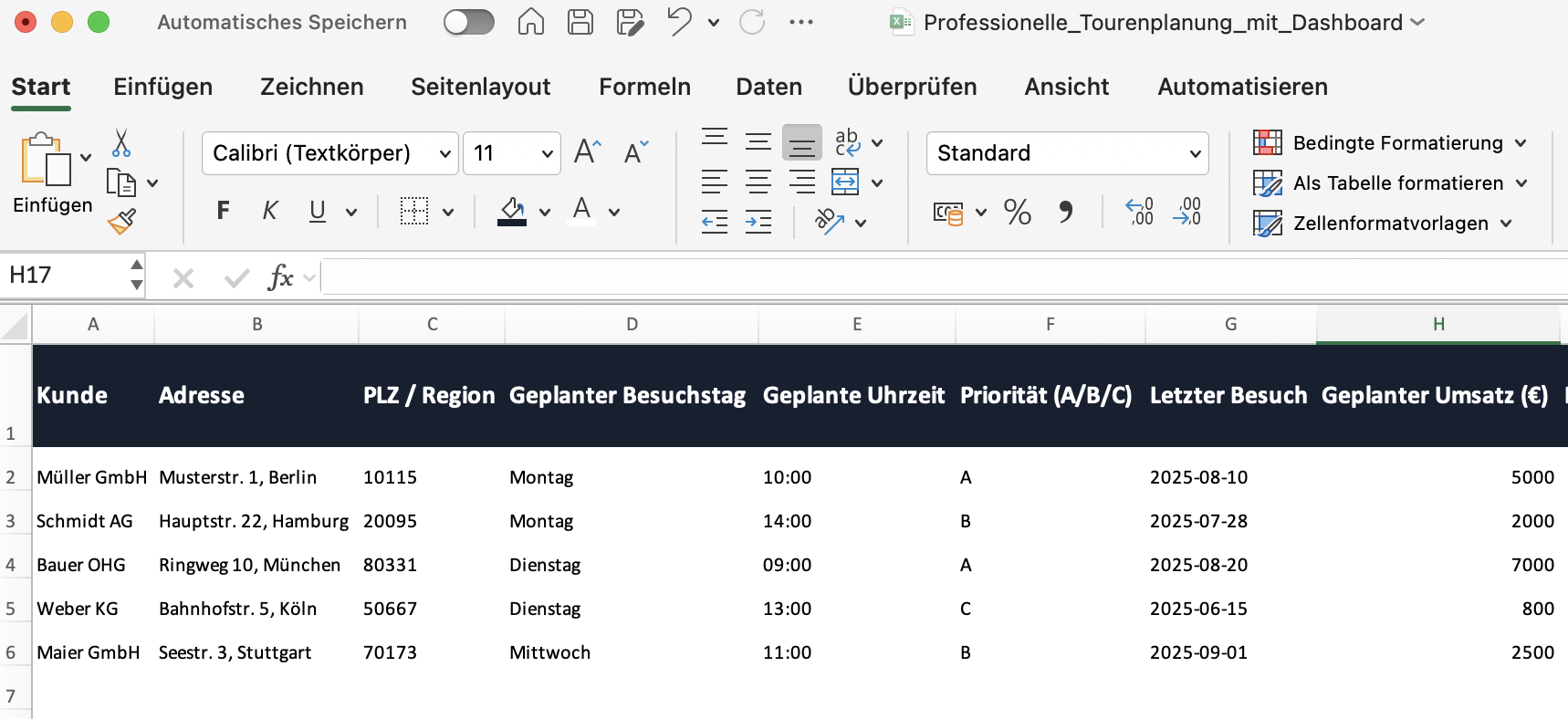
Conclusion
Route planning in field sales means fewer kilometers – and more revenue.
The key isn’t just software, but the right order of steps:
- Identify the right customers first.
- Then optimize routes.
With clear structures, the right tools, and data-driven prioritization instead of gut feel, route planning becomes a competitive advantage rather than a time sink.
With Acto’s field sales AI, your team always visits the most valuable customers – and sells smarter.
FAQ: Route Planning in Field Sales
Which free tools exist?
Google Maps or RouteXL are a start. For larger teams, tools like portatour or Badger Maps are better.
What about data privacy?
GPS tracking of employees must follow GDPR. Transparency, clear agreements, and strict purpose limitation are key.
Can you plan routes in Excel?
Yes, as a starter solution – but it doesn’t scale well.
Where is route planning heading?
AI will play a bigger role – detecting upsell opportunities and churn risks, then suggesting routes accordingly.
Which methods exist?
- Classic methods: circle method, highway method, segment/slice method.
- Digital tools: Google Maps or Excel for manual basics, specialized tools for dynamic optimization.
- CRM/ERP integration: ensures customer data feeds directly into planning.
Lastest blog posts
Lorem ipsum dolor sit amet, consetetur sadipscing elitr



